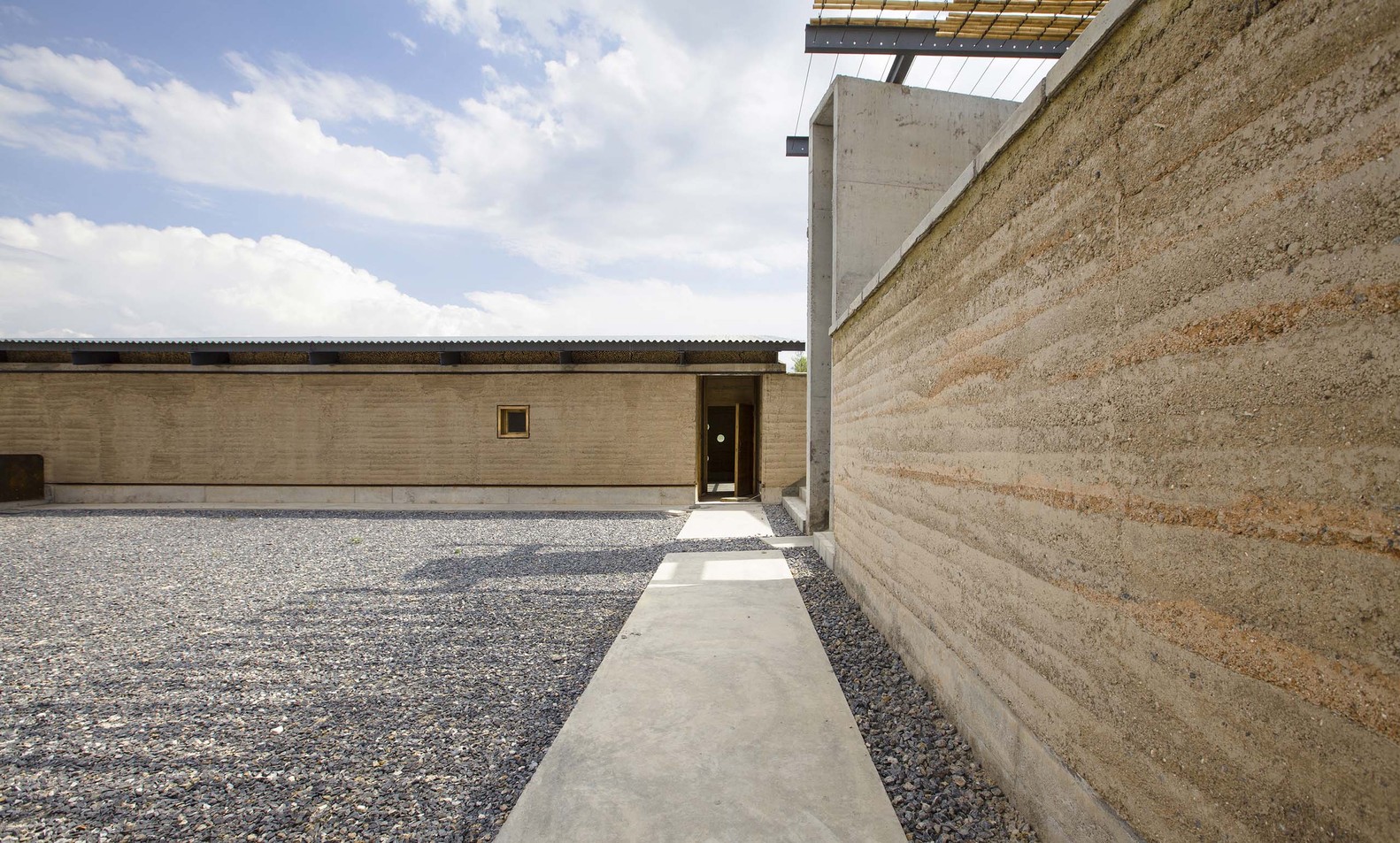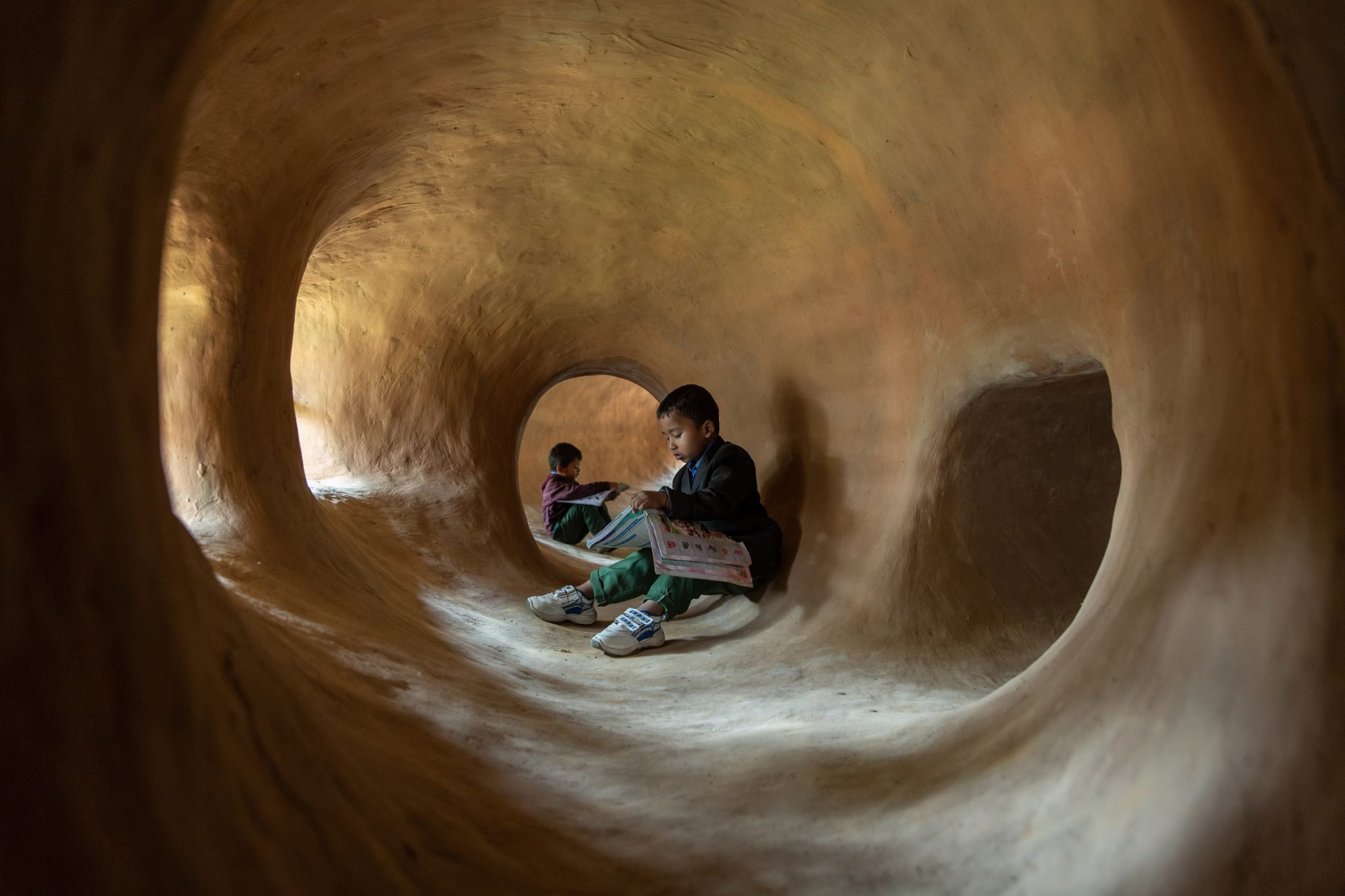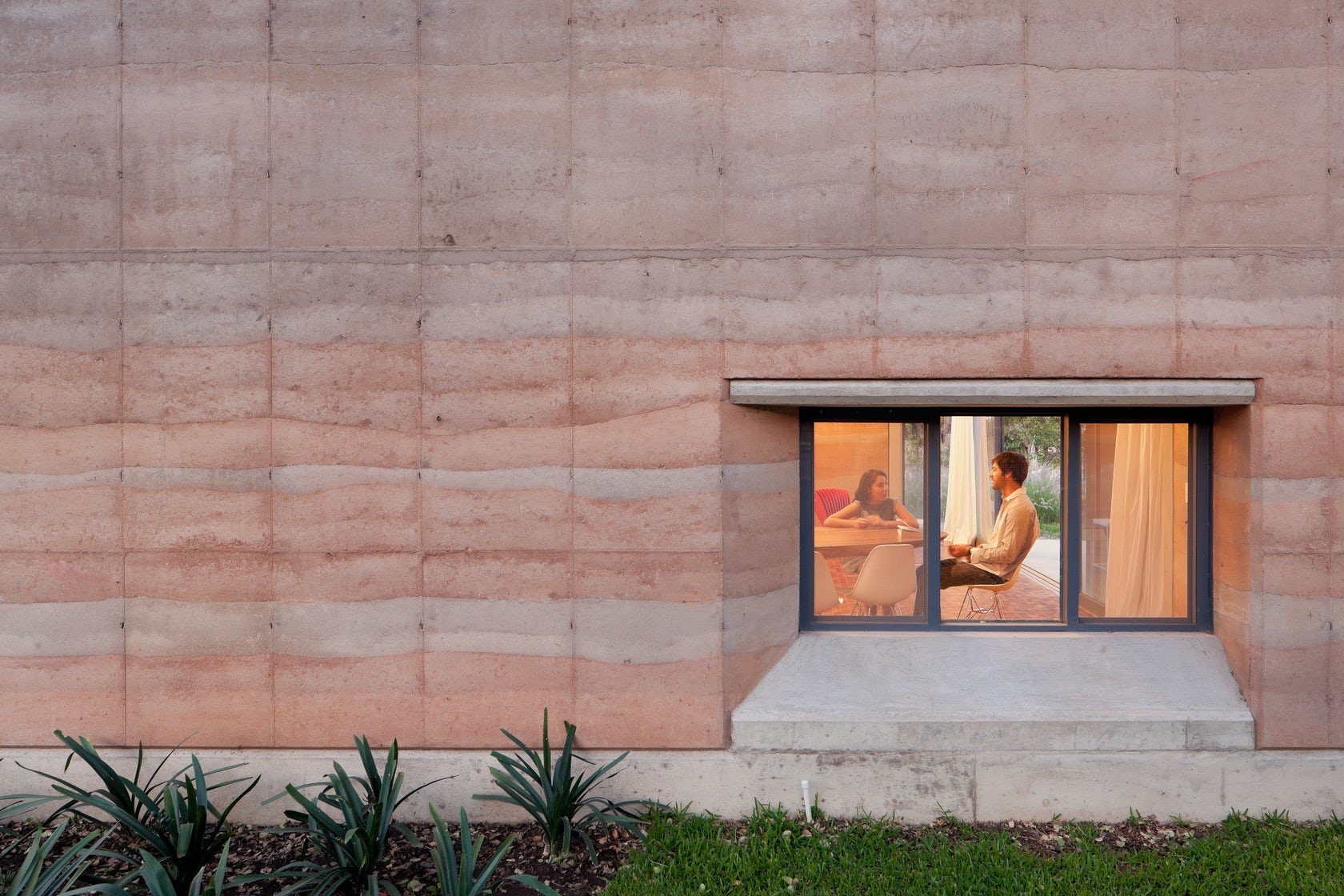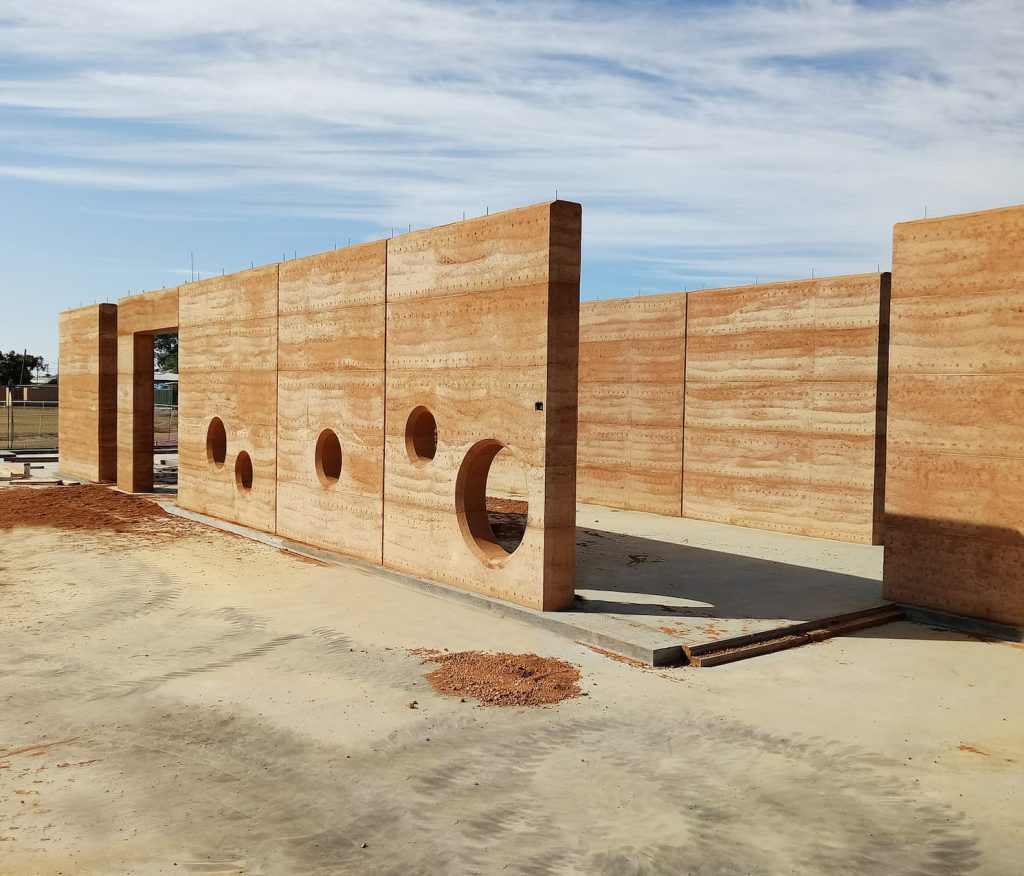“Build your architecture from what is beneath your feet.” Hassan Fathy
Building with earth has taken many forms since the beginning of the construction trade; the most durable form if which is rammed earth. Many civilizations have utilized the soil beneath their feet to build fascinating structures. Perhaps a shred of evidence for the durability of rammed earth is The Great Wall of China lasting some 2,500 years!

Macha Village Center, Courtesy of Oneartharch architect
Building with rammed earth is regaining popularity in our modern days as more architects and constructors are realizing the importance of using sustainable materials that have a low environmental impact. Although the material proposes some limitations, its advantages and the continuous scientific research regarding its potential are favoring it over conventional, less sustainable materials. Adding to its availability and durability, it is also versatile—rammed earth can be used to create building blocks or to build whole walls on site. More advantages of this incredible material will be discussed thoroughly below.
What is rammed earth?
Rammed earth is a building material made by compacting specific types of soil with components including earth, chalk, lime, or gravel. Builders compact layers of a damp mixture of the previously mentioned components into a framework. This ancient technique has been used to build walls, floors, and foundations and is now taking its place in the sustainable architecture realm.
When was rammed earth first used?
As evidence suggests, rammed earth was first used during the Neolithic period in China. Some archaeological sites of Chinese cultures that date back to 5000 BCE have structures built with rammed earth—this is perhaps what made this ancient technique a common one in China later on.
After that, rammed earth gained popularity in the United States during the 1800s because of the book Rural Economy by S.W. Jonson. Several buildings in the US were constructed using this technique, driving scientific research to give it some attention, hence more experiments and rammed earth buildings.

Therapy center by Anna Heringer – Photography is by Kurt Hoerbs
Benefits Of Building In Rammed Earth
Being derived from the earth, rammed earth is a sustainable material that proved its efficiency. Here are 7 features of Rammed earth you should probably know.
-
Low Environmental Impact
Building with rammed earth has a low carbon footprint—carbon emissions propose huge threats to our environment. To begin with, the rammed earth consumes very little nonrenewable energy during its lifecycle. Energy is consumed during the transportation of soil from off-site resources, which, in a best-case scenario, can be avoided by harvesting soil on-site. Moreover, the thickness of rammed earth building elements provides sufficient insulation, meaning less energy is needed to actively cool or heat earth buildings. Overall, rammed earth consumes less energy during its whole life cycle than conventional building materials.
-
High Thermal Mass

© Tatiana Bilbao Estudio
Rammed earth walls are usually a thickness of 1 foot, which, in addition to the density of the material, protects the interiors from extreme weather conditions. The external temperature takes a relatively long time to penetrate rammed earth which stabilized the internal temperature of the buildings. Because of this, rammed earth buildings feel cooler in summers or during the day, and warmer in winters or during the night—making a perfect material where the temperature fluctuates over days or seasons and providing a comfortable space for the inhabitants.
-
Strength and Durability

Kalkee Road Children’s & Community Hub
According to scientific experiments, both stabilized and unstabilized rammed earth structures are extremely strong and durable. They are strong enough to bear loads and resist winds, and durable enough to withstand harsh weather conditions for long periods of time. More than cement stabilizers, other additions can be incorporated into the rammed earth mixture to make it even stronger, like synthetic fiber or steel reinforcement—these will help rammed earth structures perform in a likely manner to concrete in terms of strength, but with a way more sustainable approach. It is believed that further research and technical studies will facilitate the broader use of rammed earth.
-
Acoustic Insulation
As previously mentioned, rammed earth walls provide very well thermal insulation because of their thickness and density. For the same reasons, they provide high acoustic insulation and reduce noise transmission. This feature makes rammed earth walls on the exterior perfect for locations where heavy rains or strong winds exist—they will create a much calmer and sheltered space.
On the other hand, interior rammed earth walls provide sound insulation between zones with different ambiances, like a living room and a studying room, keeping privacy and maintaining actual separation. Acoustic insulation also makes rammed earth a suitable choice for buildings where quietness is needed, like rehabilitation facilities and religious buildings.
-
Resistance and Safety
Rammed earth structures are safe. The sustainable material can be classified as a non-combustible material as it contains no flammable components, hence it is fire resistant. Moreover, rammed earth is, by nature, breathable.
Regarding pests, rammed earth is highly resistant to termites and other pests. Also, the durability of rammed earth reduces the need for timber framing that might attract termites.
-
Versatility
Building with rammed earth might propose some limitations regarding spans and height, however, it is a versatile material that has several applications in different forms. It offers variations in textures and colors and allows incorporating decorative features ranging from finishing coats to feature stones. Moreover, all shapes of windows and openings can be cut from rammed earth walls.
-
Aesthetic Harmony
Aesthetic harmony occurs when some quality in a part belongs to the qualities of the whole—this definition applies to rammed earth. The colors and textures of rammed earth structures belong and blend very well with their natural context. This harmony brings calmness and helps the inhabitants reconnect with nature and earth.

